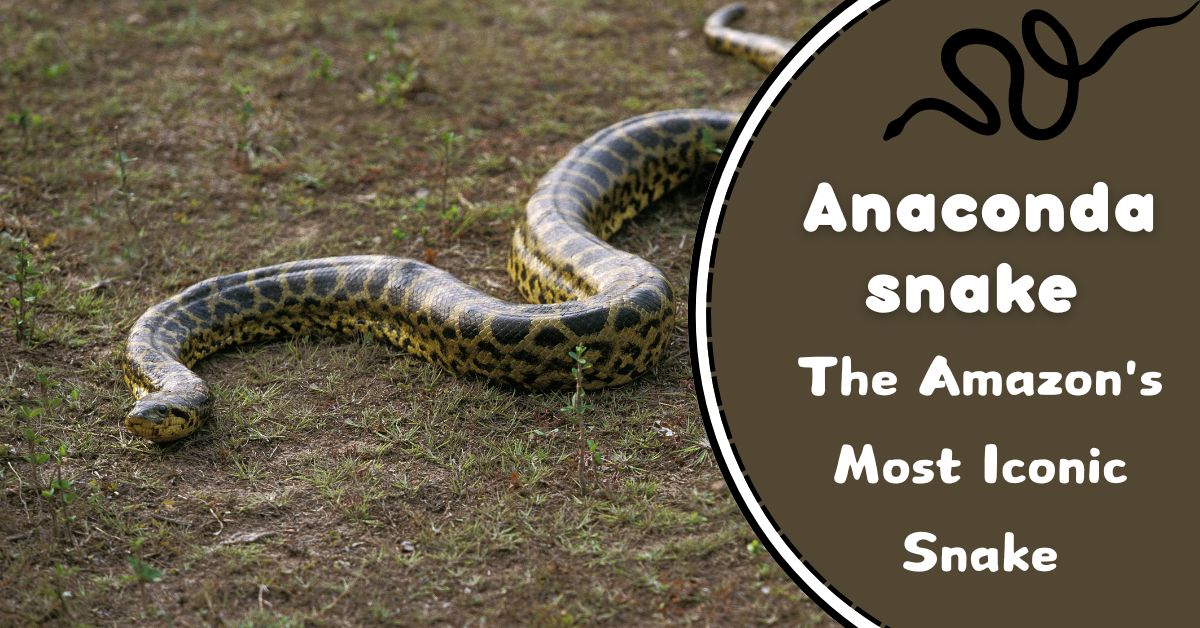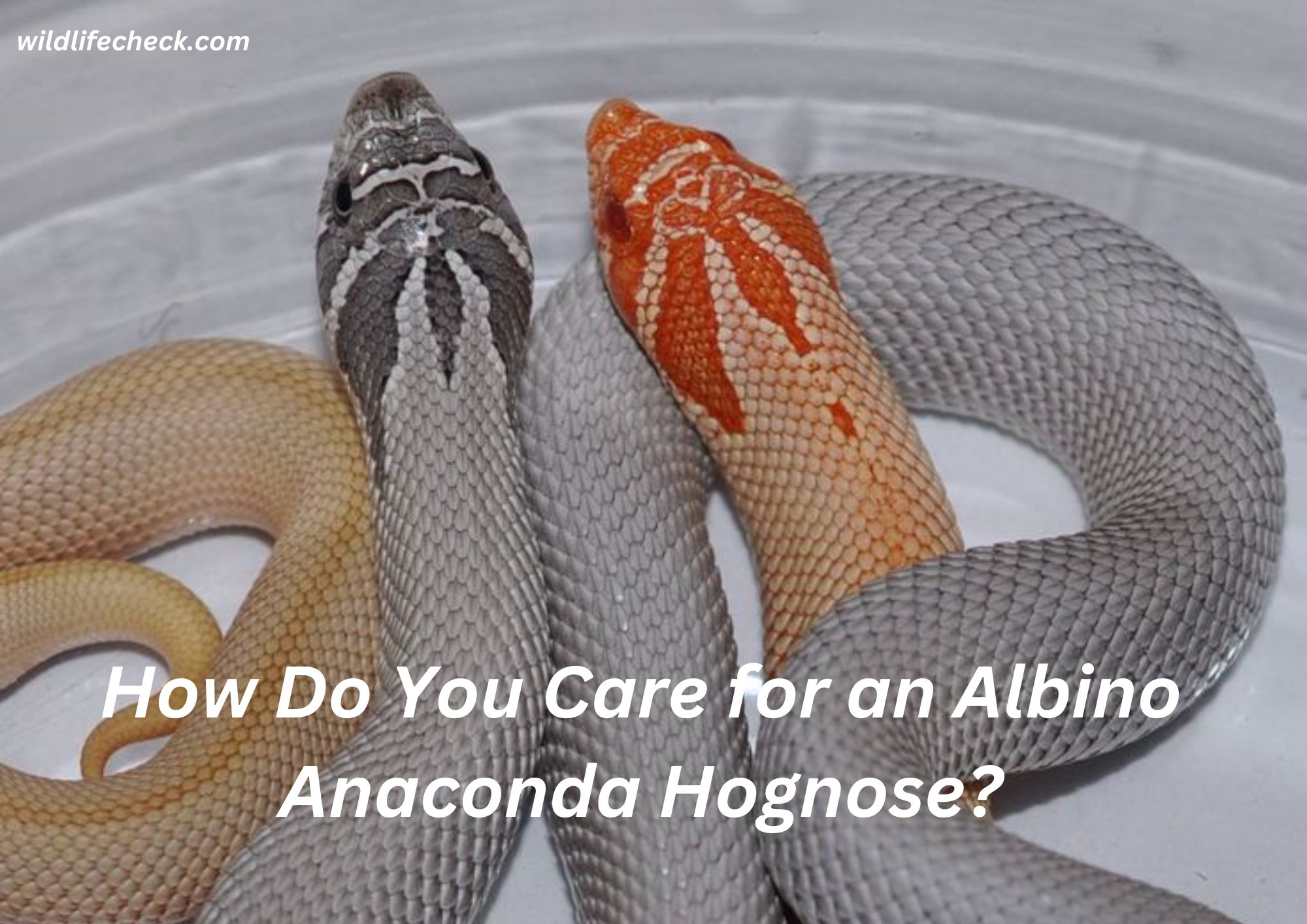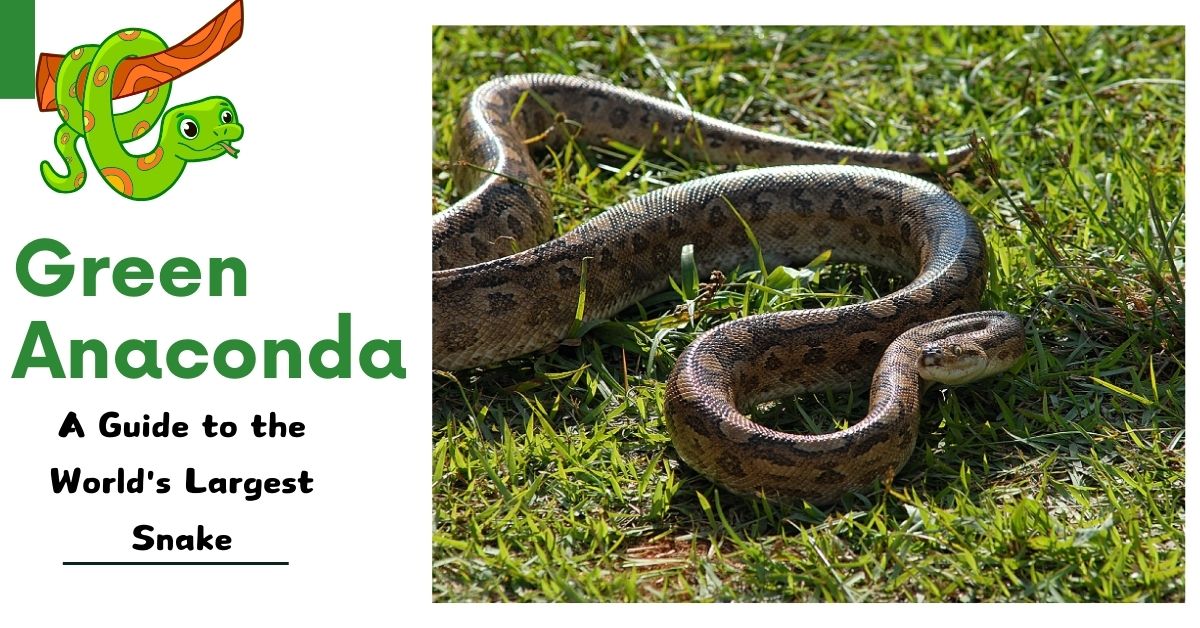
The Amazon’s Most Iconic Snake: The Anaconda
- Introduction
- Habitat of the Anaconda
- Anaconda snake behavior
- How many Anacondas are there in the Amazon?
- How Big Are Anacondas in the Amazon?
- The smallest Anaconda in the Amazon?
- What do Anacondas eat in the Amazon?
- How many Anacondas eat humans?
- Are Anacondas stronger than humans?
- Can humans survive Anacondas?
- FAQs About Anaconda Snakes in the Amazon Forest
- Conclusion
Introduction
There are numerous woodlands in the world nowadays, but the biggest timberland is the Amazon timberland, where all sorts of creatures are found that we have not seen until presently, one of which is the reptilian wind, anaconda. It is the most effective of all snakes and does not instill fear like others. Or maybe, it is popular for its huge estimate and fearsome prey, playing an critical part in the common environment of the Amazon bowl. In today’s article, we will give you with all the data approximately the boa constrictor of the Amazon jungle.
Habitat of the Anaconda
The Boa constrictor snake fundamentally possesses the thick, damp districts of the Amazon rainforest, including sluggish waterways, streams, and overflowed regions known as oxbow lakes. These snakes are likewise tracked down in different pieces of South America, including the Orinoco Bowl and the Pantanal wetlands of Brazil. Their oceanic way of life is appropriate to these conditions, where they can without much of a stretch explore through water and snare their prey.
Physical Characteristics
Boa constrictors are among the biggest and heaviest snakes on the planet, fit for arriving at lengths of up to 30 feet and gauging as much as 550 pounds. They have a thick, strong body shrouded in olive green or earthy colored scales, which assists them with mixing flawlessly into their environmental factors. Their eyes and nostrils are situated on the highest point of their heads, permitting them to remain for the most part lowered while following prey.
Diet and Feeding Habits
As strong constrictors, Boa constrictors essentially go after various oceanic creatures, including fish, birds, warm blooded animals like capybaras and deer, and incidentally different reptiles. They utilize their sharp feeling of smell to find prey and hit with lightning speed, folding their strong bodies over the person in question and pressing until it chokes. This technique for hunting guarantees that the Boa constrictor rations energy while overwhelming even enormous creatures.
Reproduction and Life Cycle
Boa constrictors are single animals for the vast majority of the year, yet during mating season, which normally happens in the early months of the wet season, male Boa constrictors will search out female friendship. In the wake of mating, the female can store sperm for a long time prior to preparing her eggs. She then, at that point, brings forth live youthful, which can number somewhere in the range of 20 to 40 children. These infants are astoundingly autonomous from birth and should fight for themselves right away.
Conservation Status and Threats
In spite of their fearsome standing, Boa constrictors face huge dangers to their endurance. Environment misfortune because of deforestation, contamination of water bodies, and chasing after their skin and meat are central issues. Also, misinterpretations and dread have prompted aimless killing of these snakes, further imperiling their populaces. Protection endeavors are critical to guaranteeing the proceeded with presence of Boa constrictors right at home.
Anaconda snake behavior
Boa constrictors are enormous, non-venomous snakes tracked down in South America, known for their amazing size and strong choking skills. Here are a few vital ways of behaving and qualities of boa constrictors:
- Size: Boa constrictors are among the biggest snakes on the planet. The green boa constrictor (Eunectes murinus) is the biggest species, equipped for arriving at lengths of north of 20 feet (6 meters) and weighing in excess of 200 pounds (90 kilograms).
- Choking: Boa constrictors are non-venomous snakes that depend on tightening to quell their prey. They hold onto their prey with their jaws and afterward loop their strong bodies around it, applying colossal strain to choke out it.
- Prey: Their eating regimen fundamentally comprises of oceanic or semi-amphibian creatures like fish, birds, turtles, capybaras, and even caimans. Boa constrictors are snare hunters, frequently ready to pounce for prey to approach.
- Conduct: Boa constrictors are for the most part single beyond the mating season. They are generally dynamic around evening time (nighttime) and invest a lot of their energy in water, where they are profoundly capable swimmers.
- Thermoregulation: Boa constrictors, in the same way as other reptiles, are ectothermic (unfeeling), meaning they depend on outside wellsprings of intensity to control their internal heat level. They frequently luxuriate in the sun to heat up and turn out to be more dynamic.
- Preservation: While not presently recorded as jeopardized, boa constrictors face dangers like natural surroundings obliteration and chasing after their skin. Preservation endeavors plan to screen and safeguard their populaces in nature.
Generally speaking, boa constrictors are captivating animals with extraordinary transformations that permit them to flourish in their oceanic natural surroundings, assuming a critical part in their environments as dominant hunters.
How many Anacondas are there in the Amazon?
It’s trying to decide the specific number of boa constrictors in the Amazon rainforest because of its huge size and the tricky idea of these snakes. Boa constrictors are fundamentally found in freshwater living spaces like waterways, bogs, and swamps inside the Amazon bowl. They are lone and nighttime animals, making them challenging to study and count precisely.
Gauges recommend that boa constrictor populaces can shift generally across various locales of the Amazon. Preservation endeavors center around safeguarding their natural surroundings and guaranteeing their endurance, yet an exact populace count isn’t presently accessible.
How Big Are Anacondas in the Amazon?
Boa constrictors in the Amazon rainforest can develop to great sizes. The biggest and most notable species is the Green Boa constrictor (*Eunectes murinus*). Grown-up Green Boa constrictors can arrive at lengths of north of 5 meters (16.4 feet) and weigh in excess of 100 kilograms (220 pounds). There are reports of astoundingly huge people surpassing these estimations, albeit such cases are intriguing and frequently discussed.
These huge snakes fundamentally possess bogs, swamps, and sluggish streams inside the Amazon Bowl and are prestigious for their capacity to trap and overwhelm enormous prey, like deer, caimans, and even panthers. They are non-venomous constrictors, utilizing their strong bodies to choke out their prey prior to gulping down them.
Experiences with these goliath snakes frequently charm minds because of their size and fearsome standing, however they by and large keep away from human connection and are not viewed as a huge danger to individuals.
The smallest Anaconda in the Amazon?
The littlest boa constrictor species found in the Amazon is the Yellow Boa constrictor (Eunectes notaeus). It is more modest than its bigger family member, the Green Boa constrictor (Eunectes murinus), which is the biggest snake on the planet by weight and width. The Yellow Boa constrictor regularly develops to around 9 feet (2.7 meters) long, though the Green Boa constrictor can arrive at lengths of more than 17 feet (5 meters) and gauge a few hundred pounds.
What do Anacondas eat in the Amazon?
Boa constrictors, especially the green boa constrictor (Eunectes murinus), are dominant hunters in the Amazon rainforest. They principally go after various creatures that they can overwhelm and consume entire because of their noteworthy size and strength. Their eating regimen regularly incorporates:
- Huge Warm blooded animals: Boa constrictors are known to go after enormous well evolved creatures like deer, capybaras, and peccaries.
- Birds: They may likewise chase birds like herons and other waterfowl.
- Fish: Fish are a typical piece of their eating regimen, including piranhas and other more modest fish species.
- Reptiles: Boa constrictors will eat reptiles like caimans, turtles, and different snakes, including more modest boa constrictors.
- Creatures of land and water: Creatures of land and water like frogs can likewise be prey for boa constrictors.
Boa constrictors are sharp feeders and can go for extensive stretches without eating after a huge dinner, as processing takes significant time because of their inability to burn calories. They are trap hunters, frequently ready to pounce close to water bodies where their prey comes to drink or swim.
How many Anacondas eat humans?
There have been very intriguing and confined episodes where boa constrictors have allegedly gone after people, yet affirmed instances of boa constrictors consuming people are for all intents and purposes non-existent. Boa constrictors are not known to chase or eat people as a normal piece of their eating regimen effectively. They are enormous constrictor winds fundamentally tracked down in South America, and their eating regimen regularly comprises of amphibian or semi-sea-going vertebrates, birds, and fish.
The possibility of boa constrictors consistently going after people is even more a fantasy propagated by electrifying media stories instead of a reported organic reality. For the most part, boa constrictors stay away from human communication and are not viewed as a critical danger to people right at home.
Are Anacondas stronger than humans?
Boa constrictors are to be sure more grounded than people in specific perspectives connected with their actual capacities. Boa constrictors are enormous, strong constrictor winds that can develop to noteworthy sizes, with a few arriving at lengths of north of 20 feet and gauging a few hundred pounds. Their strong bodies are particular for choking prey, which includes folding over and pressing firmly to choke out it.
Contrasting this strength with people:
- Tightening Strength: Boa constrictors are areas of strength for staggeringly it comes to choking. They can apply an enormous measure of tension with their solid bodies, fit for pressing huge prey creatures like deer or caimans to death. This degree of solidarity far surpasses what a human could apply with their muscles.
- Actual Power: as far as crude actual power connected with their size and capability, boa constrictors are a lot more grounded than people. Their capacity to overwhelm and control enormous prey things shows their considerable strength.
In any case, it’s vital to take note of that strength can be setting explicit. While boa constrictors succeed in specific actual perspectives like choking prey, people have qualities in different regions like perseverance, fine coordinated movements, and mental capacities. Subsequently, the correlation of solidarity among boa constrictors and people relies upon the particular setting and meaning of solidarity being thought of.
Can humans survive Anacondas?
Indeed, people can endure experiences with boa constrictors. While boa constrictors are enormous and strong snakes, they don’t commonly chase people as prey. Boa constrictors are non-venomous constrictors, meaning they crush their prey to choke out it prior to gulping down it.
Experiences among boa constrictors and people are intriguing, and when they do happen, fatalities are very extraordinary. Boa constrictors basically feed on oceanic creatures like fish, birds, and little warm blooded animals found close to water bodies right at home in South America.
In any case, in the uncommon occasion of an experience with a boa constrictor, people really should try to avoid panicking. Boa constrictors are not forceful towards people except if incited or compromised. Normally, they will withdraw whenever offered the chance. On the off chance that a boa constrictor were to tighten a human, endurance relies upon brief clinical treatment to address potential wounds brought about by narrowing and to deal with any actual injury.
In synopsis, while boa constrictors are imposing hunters in their environment, they don’t see people as prey, and experiences with them are probably not going to bring about fatalities under ordinary conditions.
Anaconda’s relationship with humans
Boa constrictors, especially the Green Boa constrictor (Eunectes murinus), are interesting animals known for their noteworthy size and strength. Their relationship with people is perplexing and differs relying upon social, topographical, and environmental settings:
- Social Discernments: In a few native societies of South America, boa constrictors are venerated or regarded as strong images of nature. They might be highlighted in fantasies and stories as both fearsome and mysterious creatures.
- The travel industry and Preservation: In locales where boa constrictors are local, they can be a draw for eco-the travel industry, with vacationers looking to notice them right at home. This can add to nearby economies yet additionally requires dependable the travel industry practices to guarantee preservation.
- Human-Natural life Struggle: Experiences among boa constrictors and people can once in a while prompt clash, particularly when boa constrictors are seen as dangers to animals or human wellbeing. Alternately, human exercises, for example, living space obliteration can compromise boa constrictor populaces.
- Logical Review: Boa constrictors are subjects of logical examination because of their extraordinary transformations and environmental jobs. Scientists concentrate on their ways of behaving, environments, and physiology to more readily grasp their position in the biological system and to illuminate preservation endeavors.
- Pet Exchange: Albeit more uncommon than with more modest snakes, boa constrictors are at times kept as intriguing pets. This training is disputable because of the difficulties of lodging such enormous creatures and worries about their effect on local biological systems whenever delivered.
Generally, the connection among boa constrictors and people is complex, going from social imagery to natural communications and preservation endeavors. Keeping a decent methodology that regards their regular ways of behaving and environments is vital for their endurance and for the biological systems they occupy.
FAQs About Anaconda Snakes in the Amazon Forest
Q: How big can Anacondas get?
A: Boa constrictors can grow up to 30 feet long and weigh as much as 550 pounds, albeit such huge examples are intriguing.
Q: Are Anacondas dangerous to humans?
Some time Boa constrictors are not normally forceful towards people, they are strong hunters fit for causing hurt whenever compromised or incited.
Q: What is the diet of an Anaconda?
A: Boa constrictors essentially feed on fish, birds, vertebrates like capybaras and deer, and periodically different reptiles.
Q: How do Anacondas reproduce?
A: Boa constrictors mate during the wet season, and females bring forth live youthful in the wake of putting away sperm for quite a long time.
Q: Are Anacondas endangered?
A: Boa constrictors are not presently recorded as jeopardized, yet they face dangers from territory misfortune and human exercises.
Conclusion
All in all, the Boa constrictor snake in the Amazon woods isn’t simply a hunter however an image of the rich biodiversity that flourishes in one of the world’s most significant biological systems. As we proceed to investigate and comprehend these entrancing animals, obviously their protection is critical for the wellbeing and supportability of the whole Amazon district.





Your point of view caught my eye and was very interesting. Thanks. I have a question for you.
Thanks sir. And let me know how I can help you
Your point of view caught my eye and was very interesting. Thanks. I have a question for you.
Thank you very much sir. Tell me what I can do to help you
Can you be more specific about the content of your article? After reading it, I still have some doubts. Hope you can help me.
Can you be more specific about the content of your article? After reading it, I still have some doubts. Hope you can help me.
Thank you for your sharing. I am worried that I lack creative ideas. It is your article that makes me full of hope. Thank you. But, I have a question, can you help me? https://www.binance.com/de-CH/register?ref=UM6SMJM3
Your point of view caught my eye and was very interesting. Thanks. I have a question for you.
Your point of view caught my eye and was very interesting. Thanks. I have a question for you.
Can you be more specific about the content of your article? After reading it, I still have some doubts. Hope you can help me.
Hi , I do believe this is an excellent blog. I stumbled upon it on Yahoo , i will come back once again. Money and freedom is the best way to change, may you be rich and help other people.
Can you be more specific about the content of your article? After reading it, I still have some doubts. Hope you can help me.
Thank you for your sharing. I am worried that I lack creative ideas. It is your article that makes me full of hope. Thank you. But, I have a question, can you help me?
Your article helped me a lot, is there any more related content? Thanks!
Your article helped me a lot, is there any more related content? Thanks!
Thanks for sharing. I read many of your blog posts, cool, your blog is very good.
I just could not leave your site before suggesting that I extremely loved the standard info a person provide on your guests? Is going to be back regularly in order to investigate cross-check new posts